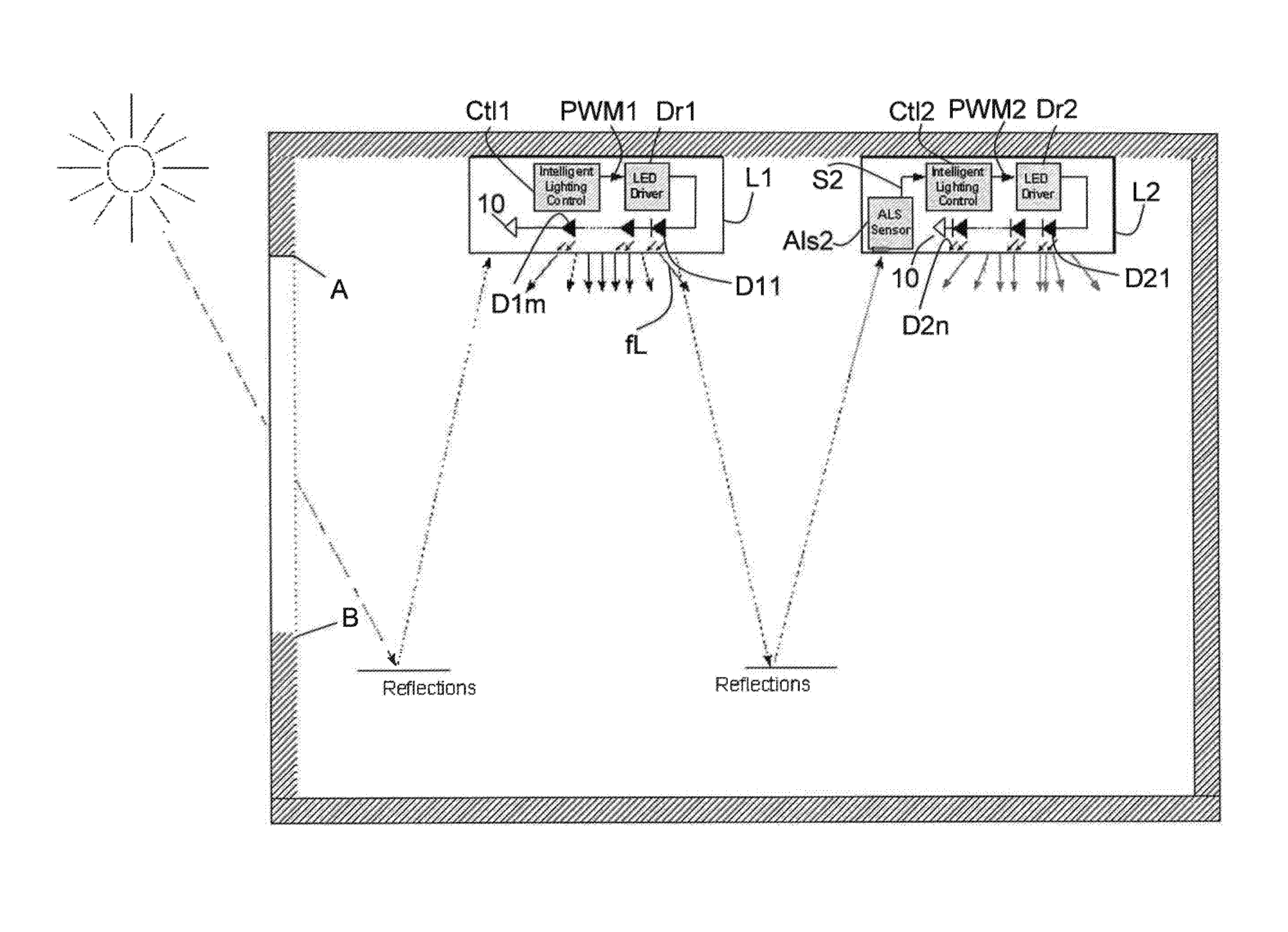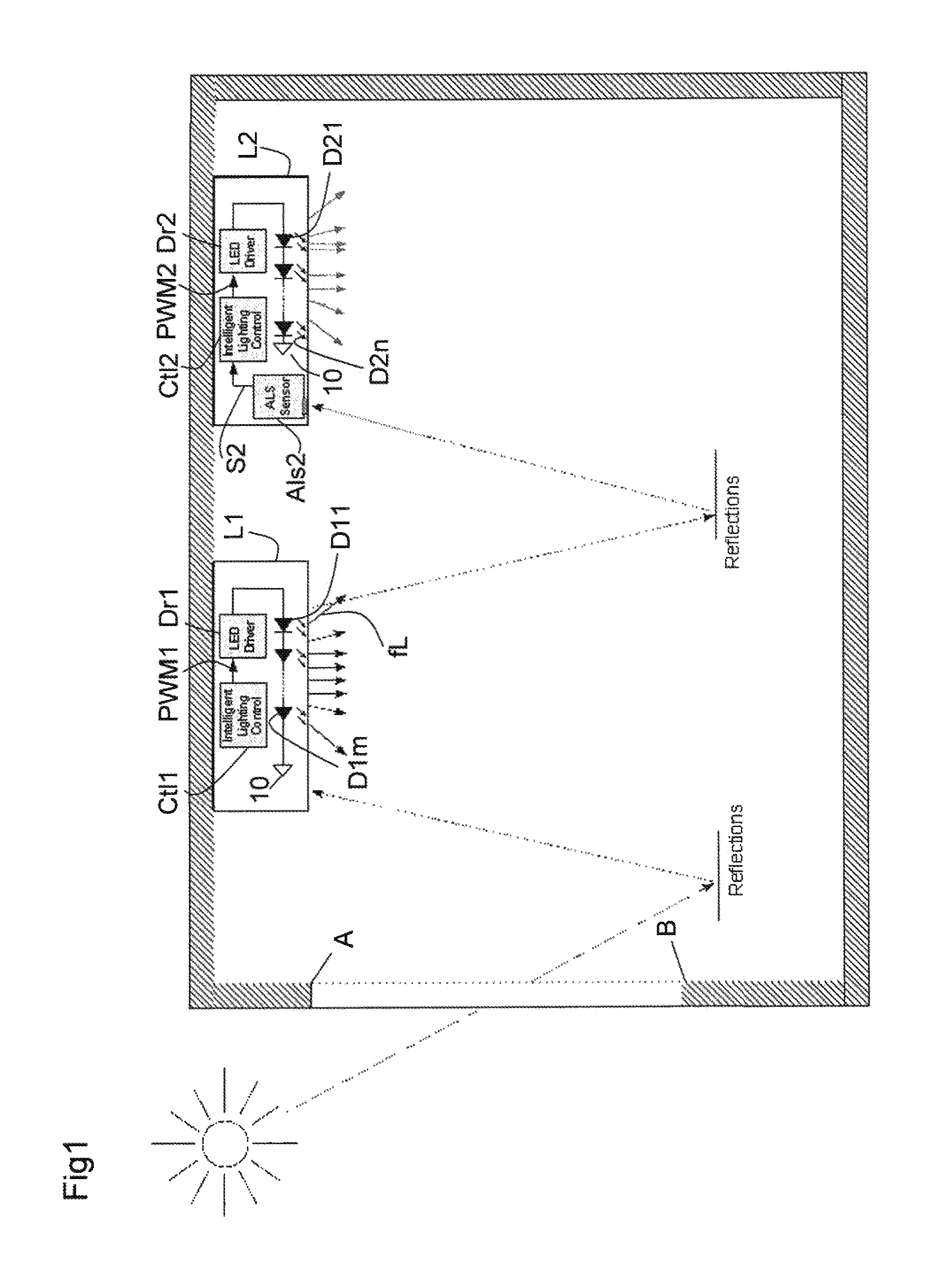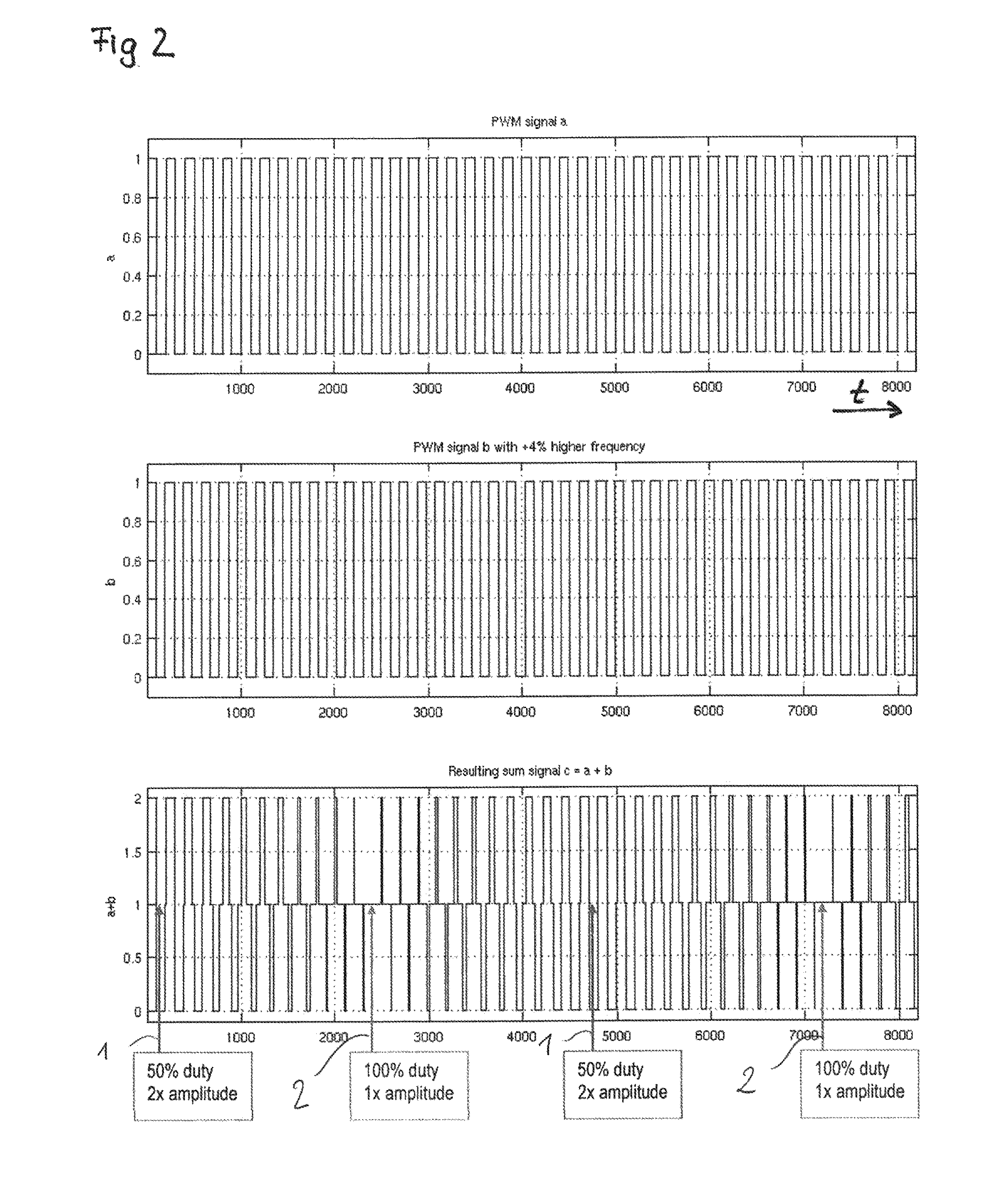Electronic lighting system and method for lighting synchronization
a technology of electronic lighting and lighting synchronization, applied in the field of architectural lighting, can solve the problems of slow overall variation of phase relationship, sub-harmonics or beat frequencies, adverse effects of beat frequencies on human beings, etc., and achieve the effect of optimal energy saving
- Summary
- Abstract
- Description
- Claims
- Application Information
AI Technical Summary
Benefits of technology
Problems solved by technology
Method used
Image
Examples
Embodiment Construction
[0056]FIG. 1 shows an exemplary embodiment of the electronic lighting arrangement according to the proposed teaching. A first light source L1 and a second light source L2 are arranged in one room. This room has a window extending between points A and B. The first light source L1 comprises a first control unit Ctl1 and a first driver circuit Dr1. The first light source L1 further has a number m of LEDs D11, D12, . . . , D1m connected in series to the first driver circuit DR1.
[0057]The first control unit Ctl1 provides a first driving signal PWM1 to the first driver circuit Dr1. The first driver signal PWM1 is a pulse width modulated signal having a first frequency f1. The first driver circuit Dr1 drives the connected LEDs D11, . . . , D1m using the first driving signal PWM1. Thereby, LEDs D11, . . . , D1m are connected in series to each other, the first LED D11 being connected to an output of the first driver circuit Dr1. The LEDs D11, . . . , D1m are referred to a reference potential...
PUM
 Login to View More
Login to View More Abstract
Description
Claims
Application Information
 Login to View More
Login to View More - R&D
- Intellectual Property
- Life Sciences
- Materials
- Tech Scout
- Unparalleled Data Quality
- Higher Quality Content
- 60% Fewer Hallucinations
Browse by: Latest US Patents, China's latest patents, Technical Efficacy Thesaurus, Application Domain, Technology Topic, Popular Technical Reports.
© 2025 PatSnap. All rights reserved.Legal|Privacy policy|Modern Slavery Act Transparency Statement|Sitemap|About US| Contact US: help@patsnap.com



